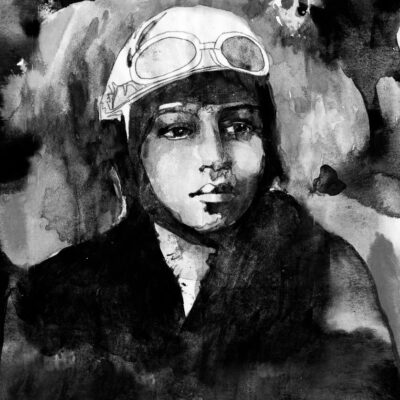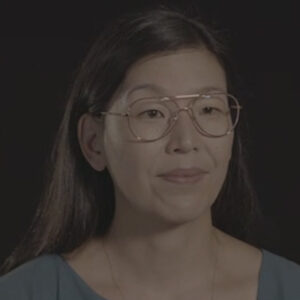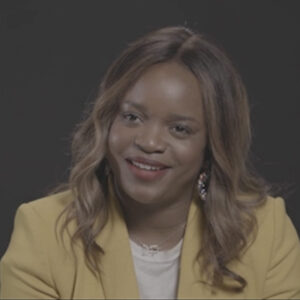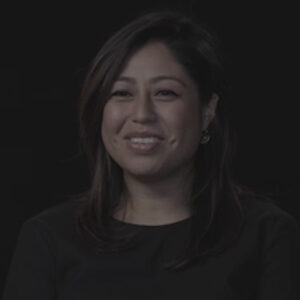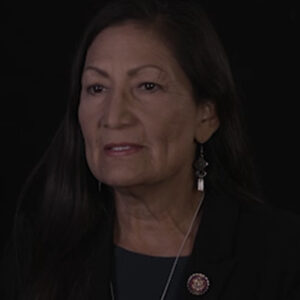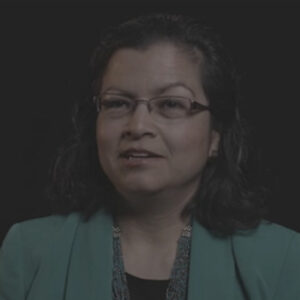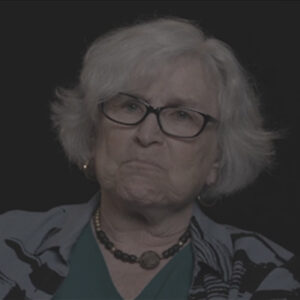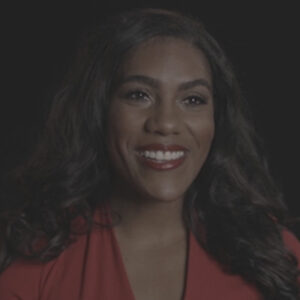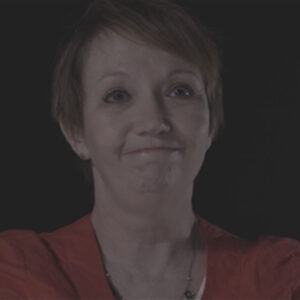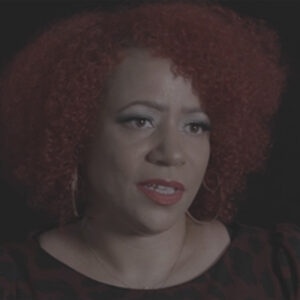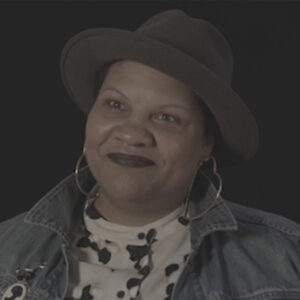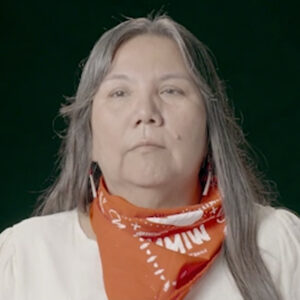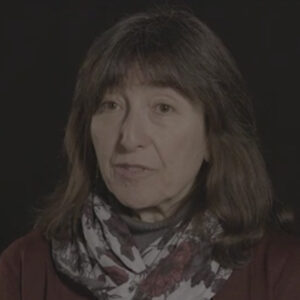Speaker So eugenics is part of a scientific racism movement, but it’s specifically thinking about genes and race, a biological determinism that is going to be used in both efforts of family planning and social organization of society and justifying the mistreatment and second class citizenship of non-white people. And so eugenics is deeply rooted in this idea of inherent difference that is at the genetic level, that these are unchanging things, no matter how much schooling or how many classes with social graces or exposure to certain aesthetics and cultural ideals that particular groups, and namely in this instance, African-Americans and recent immigrants from China and from other parts of Asia are not going to be able to be assimilated into American society because they are inherently different.
Speaker And so we need to create processes of either limiting their reproduction, which becomes a part of one part of the family planning movement that takes off in a large speed in the early 20th century, really in the teens, the 1910s and 20s, that we see the emergence of that and then also the other in this kind of racial violence aspect of this. And then separatist racial separatism believe different racial communities should live in different spaces and not intermingle in any way. And that plays into some of the kind of Jim Crow logic, coupled with eugenics, coupled with this idea of a modern society that should be free from these primitive ideas and primitive peoples. And eugenics plays into all of that and becomes in many ways, the evidence that substantiates claims about the natural inferiority of non-white people.
Speaker Specifically, of course, yes, it’s a very particular white person, if we think about white and Anglo-Saxon and Protestant persons were the idealised figure in eugenics and eugenics, of course, play a huge role and genocides throughout the 20th century that emerge and who is privileged here and people using phenotype and presumptive ideas about the size of skulls, the size of the pelvis bones to make arguments about inferiority or hypersexuality or limitlessness. All of these things get marked onto the body and seen unchanging. And for those reasons, we’re able to see how a racial caste system emerges for those in power to say white Protestant men are the dominant race. And that’s how it’s supposed to be. This is what genetics tells us is what biology tells us and that black women were at the other end of this hierarchy who were inherently not as intelligent, inherently unattractive or inherently overly sexual, explicitly sexual, and needed to be separate from those at the top of the hierarchy to maintain this racial purity.
Speaker So you see a lot of these intersecting ideas, legal cases and everything intermingling in this moment. So eugenics is a part of how we think about the Jim Crow era. Eugenics is also how we think about what it means for people to feel terrorized in their own communities and the logic behind the terror that a lot of people don’t recognize it as terror at the time. We can look back and say, hey, lynchings were bad, but at the time, people were sending postcards with smiling images of children in front of lynched bodies, burned bodies, mutilated bodies, and that circulated.
Speaker That is a social activity. And so that also tells you the ingesting of scientific, so-called scientific pseudoscientific ideas about black people were deeply ingrained in the cultural consciousness of America at one point. And eugenics plays an integral role in that, having that scientific grounding seem to bolster these cultural, political and social and economic claims that are being made about citizenship.
Speaker What other educational opportunities did African-American educational opportunities for African-American women were still quite limited in the late 19th and early 20th century? You have exceptions to this. Of course, you have an institution like Oberlin College who has an open admissions policy and is the first to have African-American and female students be able to graduate and pursue careers, college careers at the institution. But for the most part, that’s still a very small number. Graduating classes would have two or three black women if that in the late 19th century, slightly increased, increasing in the early 20th century. But you also have the founding of what we now know is historically black colleges and universities that are established post the Civil War. So you have institutions like Wilberforce University. What now is Spelman College, Morehouse Fisk, Lincoln University. You have HBC use that are popping up in many different states across the nation and also schools, normal schools, which are equivalent kind of primary and secondary educational institutions for African-Americans that are established in this.
Speaker And you see this valuing of education that’s so important, the African-American community in this era, because of the sense that if I have education, I have more opportunity, that I can learn how to do any number of things, that that idea of possibility that moves people from southern cities to northern cities, Midwestern cities, but also has people in the south thinking about their lives differently, largely comes to the founding of these institutions. And you see black girls, black women wanting to participate in that. But they face the double barrier of both racism that limits what that can look like and also sexism. This idea that the priority of education for certain communities would be educating the men as they would be the breadwinners, they would be the ones who would be head of household and seeking employment to provide for families. But African-American women often were working women, working in the capacity of domestic, working in the capacity of informal businesses and economies that they were raised to also contribute to their households. So for those women who pursued education, they were trying to also carve out space to create new employment opportunities for themselves as teachers, as nurses, as principals, eventually as business owners that were so important in these intra communal spaces. The black community, because we do have Jim Crow, had to create their own institutions, organizations, businesses to thrive and to sustain itself. And so black women were an integral part of that and finding roots into education as a way to create more opportunities for themselves. But the college educated black woman, that’s a slow moving increase, I should say, in the number of black women who were afforded that level of education during this period.
Speaker Tell me briefly about women’s clubs and women’s organizations and what movements they were able to move.
Speaker So the late 19th and early 20th century is the height of clubs and organizations for women. Women are organizing everywhere. Women are finding ways to engage in public life and innovative and inventive ways. And this is across racial communities, even when they’re not working together. So you have club women and club women in African-American communities are forming around ideas of racial uplift, of providing educational opportunities to kids in their communities, to providing certain kinds of classes to think about family in different ways, to think about opportunities in different ways, to really create social and political possibilities for African-American communities. But you also have club women who are focused on issues like temperance, like modesty, like organizing against the uptick in violence that you see in certain areas throughout the country and railing against that and using femininity as a political strategy to organize, to say my position as a woman gives me this moral authority to comment on certain forms of what are considered moral depravity at the time. And so you see women who are organizing around that. You also see white women in organizations that are for me to talk about suffrage, to talk about women’s place in the world, but also forming sewing clubs, literary clubs, choral societies, debate societies. You see such a range of ways that women are seeking to think about their position in the world. Some of them are semiprivate. Some of them are private spaces that they create to this, and some of them are very public.
Speaker And I think there’s a mix of that gives women the opportunity, a large number of women the opportunity to think about participating in public arenas in a very different way than they had prior to the civil war, that even though we think about the civil war justly and understandably through the lens of race, we also can think about what it means in terms of shifting ideas about gender and how women want to see themselves in this emerging modern world is rapidly industrializing world. The questions of work, the questions of what stories should be written and told, what plays should be performed, what should be in a community. These are things that women are thinking about and creating spaces in which to collaboratively think about these things. And I think about club women being organized mobilizes and also wanting to exist in space with other women and think out loud with other women about the pressing issues and the day to day things, the day to day silly things even that they wanted to be involved in.
Speaker And what changes society enables this. Move into the public space en masse.
Speaker I think I think that women demanded new space in the late 19th and early 20th century. I think even though it is the height of what we think of is Victorian womanhood and this idea of the home being the space in which women were supposed to only be that women were pushing back against, that you see a changing world and you have to ask, what is my role in this?
Speaker What is the role that I want to have in this? And so women start to reimagine themselves as well in this moment. And this is, again, across race to think about the limitations that have been placed on them and to think, is this a pedestal or is this a prison? And I think with women starting to question that, because it’s the height of thinking about womanhood and specifically white womanhood on this kind of pedestal that needs to be protected, that there are some women who are asking what if this pedestal is actually a prison and doesn’t present us with a new idea of citizenship? And what the 14th Amendment, you have an articulation of what citizenship would mean. And so I think women were really starting to think about what citizenship would mean for them and seeing the need for having their specific concerns addressed in more robust ways. So something like voting rights and being able to have a voice politically became increasingly important after the civil war as family structures is changing, as work is changing, as where people live, are changing. All of these things are changing and changing quite rapidly. If we think about it in the context of human history, that 50 years is a short amount of time in which to see that kind of rapid transformation of society. And I think women were trying to figure out their place in that. And club women organisations, institutions founded by women were the primary sites where women were working that out and thinking that through. Did the white organization tend to treat their African-American counterparts, so why club women unfortunately have a pretty not great record as it comes to anti black racism and thinking about and incorporating and working with their black counterparts, the black club women. There are those who really do work across race and are in interracial community in terms of organizing and mobilizing. But for the most part, club women’s movements are race specific movements that you have black women and you have white club women, and that in those spaces there are particular ideals and ideas about what the future may hold and what possibilities exist and what barriers they’re facing. So black women had to think about both racism and sexism, and that often isn’t the case that you see that being front and center with organizing that’s happening if there is political organizing that’s happening among White Club women. And those tensions were very real. And those tensions play out in a number of places, but particularly when we think about organizing around women’s suffrage is where you see the most explicit tensions around race, gender identity playing out in the public space and among these different organizing pockets of women in the United States during this period.
Speaker Yes, but, you know, when I was waiting for the water, I’m sorry.
Speaker I think it’s OK.
Speaker Yeah, I know you’re like I got it.
Speaker Thank you. That was very diplomatically put. Yes.
Speaker How was the suffrage movement galvanizing for African-American African-American women who had been involved in the suffrage movement since we market in American history? I think it’s really important to think about the suffered the history of women’s suffrage before Seneca Falls, because that’s often the marking point that we have in American history is 1848 as this convening of women, specifically white women, to think about women’s rights and more specifically, the right to vote the elective franchise, when in fact, many of the women who were there, like Lucretia Mott, who were also at a convention about 10 years before that and were organizing around anti slavery initiatives. And there there are black women who were present there, even though only one black woman speaks at this particular convention, that it’s so important to think about those women first talking about suffrage and the anti slavery convention and women’s rights, and that 10 years later, after some of these women have traveled to Europe and been pushed to the side and not given space to talk that they’re like, I think we need our own movement to talk about women’s suffrage and we need to center that in the way that we organize so that you see this great overlap between abolitionist activism among women and activism around suffrage that converge. And so you see black women and white women and particularly free women of color and white women finding common ground and organizing together pre the civil war. Now post the civil war and the passage of the 15th Amendment. There’s a huge fracturing in suffrage activism because you have those who are extremely disappointed and vocal about black men being granted the right to vote, even though that vote that’s only legally the practice of that is certainly marginalized over the next couple of decades through various state laws, policies, poll taxes, literacy tests, various ways to disenfranchise these men who were franchise enfranchised by the 15th Amendment and refuse to organize with black women and see the split as caused by their own understanding of who should get the vote first, that it actually wasn’t about universal suffrage, that they now we’re talking about a more narrow conception of who they thought should vote. And then you have some white suffragists who do say, OK, we didn’t get what we wanted, but we still want to work in cooperation with someone like a Lucy Stone, who is still working in cooperation with black women after the passage of the 15th Amendment to say we’re working towards suffrage, we still want this and ultimately want to think about this woman’s suffrage as universal suffrage, the opening up of suffrage in the elective franchise. To everyone. You have black women who are also frustrated by the 15th Amendment, who are thinking about a more radical approach and turning inward to think about their activism, to really mobilize with other black women, to continue to push for women’s suffrage and the repealing of all of these various policies, codes and laws that were restricting black men from voting. So you have numerous pockets that emerge and suffrage activism, whereas prior to the civil war, although there are definitely differing differential groups, there was more cohesion around the idea of women’s suffrage. Now we have to question what does universal suffrage mean? And that is a question that emerges for a lot of black women, black suffragists in the late 19th and early 20th century.
Speaker Is there anything else on historical context that I didn’t cover or I think I know is like I think we’re good?
Speaker Did you feel like a break? I can go for a little bit longer.
Speaker We can dive into a little bit and let me know when you are right.
Speaker Yes.
Speaker If you could run through her life with perfect details.
Speaker Oh, I can prompt. You saw chapters along the way. Sure. So start with her background and her childhood.
Speaker OK, so Mary Church Terrell, probably one of my favorite figures to talk about because she has this incredibly rich life where you can mark almost every significant moment and movement in American history from the late, late, late 19th century to the early 20th century and really through the mid 20th century through her life.
Speaker So she’s born in Memphis, Tennessee, in 1863, I believe, and she’s born to a fairly prominent family. Her father had made considerable money doing real estate. He actually increases his wealth after her birth when he buys up a bunch of land and property in Memphis. And this happens as a result of a bunch of people leaving Memphis after a yellow fever epidemic. So a lot of people evacuate the town and he buys a property. And Robert Church becomes one of, if not the first African-American millionaire in the South that we know about. And so he is providing a pretty comfortable life. He, along with his wife, who’s an entrepreneur, who has one of the first known beauty salons that she owns and operates also there and is able to afford their children with a pretty amazing lifestyle, given the historical period in terms of wealth and privilege, and also because this family is white passing, that they’re able to have access to certain spaces that most people of African descent in the United States would not have had during this period.
Speaker So because of this, she’s afforded the opportunity to go to school and Antioch at Antioch, which is a model school for elementary and secondary education, which is in Yellow Springs, Ohio, which is a boarding experience for Mary Church. Terrell, she’s one of very few who African-Americans who are present there, but she’s using that as the space to really ground her education in that moment. And her family really wants her to have the best of everything that they can provide her with. Still, given the limitations even they might face as people who are in this biracial family.
Speaker And after she leaves there, she goes to high school in Oberlin, Ohio, and ends up staying in Oberlin and pursuing the gentlemen’s track at Oberlin College, which is the full four year program for a bachelor’s degree at Oberlin College and is studying the classics while she’s there. So really doing unconventional things in this moment. She’s classmates with fellow amazing women, Anna, Julia Cooper and Ida Gibbs. So she’s not alone, but they’re still pretty alone at this institution. And they become part of the first full kind of graduating class of African-American women from Oberlin College.
Speaker And she is really they’re a star at Oberlin’s and she is class poet. In her first year, she becomes editor of the Oberlin Review, which is the campus newspaper. She’s in various organizations and society. So she is someone who makes her presence known. And some of this she’s accessing because some people don’t exactly know how to read her easily. But some of this she’s accessing because she has really taken every opportunity she’s had and attempted to just push herself farther and farther along in terms of her educational practice. So Oberlin, is this space where she’s meeting up with these dynamic women who would be co-conspirators later in life of various campaigns that she’s invested in and one of the most robust campaigns that she becomes involved in while at Oberlin was thinking about suffrage. She’s introduced to the work of Susan B. Anthony while she’s in college, who ultimately becomes a friend and colleague until Susan B. Anthony death in 1986. So there’s a real relationship to political activism, even though she doesn’t immediately become a political activist once she leaves there, she’s someone who’s deeply invested in education. And teaching as a career was one of the most, if not the most common career pathway for African. American women and women more broadly who have completed college educations, some level of college education, and so she takes her amazing talents to Wilberforce University and teaches Latin there and really shapes language and classical education as part of this burgeoning institution is relatively new, historically black college in Ohio and wanting to train those students and really get those students prepared for this modern world. She uses that language alongside a lot of black women activists, teachers in this era to think about the modern world, how we’re preparing students for that. She also gets a masters from Oberlin College and she becomes a teacher after helping to shape the program in languages and Latin at Wilberforce University, moves to Washington, D.C. and becomes a teacher and eventually a principal at M Street High School, and which is this nationally known high school for African-Americans in Washington, D.C., that has the most amazing teachers, has some pretty incredible students as well and programs. And it’s the space where, you know, these kids are going to do something great. So these teachers are some of the most dynamic and well qualified and the students are getting all of that access to these amazing teachers. It’s also here that she decides that she’s going to study abroad and travels to Europe and studies abroad for a few years and in that period becomes a polyglot who speaks now. I think she learns French and Italian and German, if I remember correctly, that she learns there in addition to the classic language of Latin that she’d already known. And this really opens up her eyes to the kinds of experiences she wants to have here. And also when she returns, she’s thinking about the world differently as well and what her activism will look like. Ultimately, she meets her husband at HomeStreet High School, where he is a teacher, but eventually becomes a very preeminent judge, Robert Tarryl. And at first he thinks about removing herself from public life because she’s gotten married, which was an expectation for a lot of women. Once they got married, you were considered resigning your position. That was written into some documents and institutions. But through her relationships with other activists, namely in this one, Frederick Douglass really encouraged her to continue sharpening her voice throughout this. And she had to think back to some of these key moments that had shaped already her education at Oberlin, her encountering of suffrage activism while she was there as well, but also thinking about back in her hometown in Memphis in 1892 when her friend Thomas Moss was lynched and was lynched as a result of kind of a form of economic violence because he was a business owner in the city, was targeted and lynched. And this also fits with her in terms of thinking about how am I going to address this and what can my role be in uplifting these stories, amplifying these stories, being a voice for my community and being able to do that. And Mary Church Terrell is someone who begins to reshape and rethink how she’s going to enter into the world of public activism through this, even with her family life, which is very challenging in many ways for her. She has miscarriages. She has only one child that survives into adulthood through multiple pregnancies. So she’s an early victim of what we now would think about in terms of infant mortality and black infant mortality being particularly high, even with the considerable resources that she had and access that she had, she later adopts another child. But that personal life was a place of deep emotional turmoil. So for her to really galvanize around the pressing issues of the day and become a force in the founding of numerous organizations and campaigns that would ultimately reshape American history is quite phenomenal.
Speaker To take in her record how to really try to get as much as I could in there.
Speaker I think you’re on the other side.
Speaker Oh, yes. All right. There we go.
Speaker Yes. I’m going to follow up on a couple of things. Yes, back up where we left off. When you say white passing. What do you mean by that?
Speaker So, Mary Church Terrell was considered white passing in this era, meaning that there was a way that she could be read as white, that there were people who did not read her necessarily as an African-American or a biracial woman. Now, there were those who Absolom. Read her as biracial or African-American, but because of her very, very fair skin, her features, there were spaces that she could enter into where darker African-American people with different features would not have had access to.
Speaker She recognizes this is a privilege that although she identifies with black women throughout her life and identifies herself as one, in fact, she calls herself a colored woman from the south. Right.
Speaker Thinking about herself in that way, that she also understands that she’s not always read in that way and that she’s able to use her ability to pass and move through spaces without being seen as black, as a way to give voice to black women in rooms in which black women were typically excluded.
Speaker Thank you.
Speaker Why study the classics of Mary Church Terrell wanted to challenge herself and challenging herself meant taking a course of study that really allowed her to open up the possibilities for how she could think about the world, how she could engage the world, and how she could move throughout the world. So Mary Church Terrell actually takes up the classics, which means she is going to know all of the literature that her fellow students may or may not know, given what course of study they would know, in addition to the histories and activism and folks in her community who she knew, who were amazing figures that she was introduced to because of the prominence of her family, to take all of that knowledge and shape herself into someone who became this worldly thinker. And the classics also allow for her to say, I have this degree that is extraordinarily challenging, that is seen as outside of what’s possible for black women to achieve. And and I think she was pushing those boundaries a little bit to think about what it is that a black woman could study and could excel at. And it opens her up to being able to study language, to study the world, being able to move to spaces throughout the world that she would not have been able to move through without that kind of knowledge base and move through in a way that made her a compelling figure, that made her a convincing figure. They made her a figure that was so persuasive and engaging that she was able to do that. And it makes her able to learn languages in a different kind of way. So when she’s studying in Europe post college, that she’s able to pick up three more languages through this ability, that she got that grounding at Oberlin and wanting to know what the classics meant.
Speaker And I think she had some pushback also, even in that of how we think about the classics, the overwhelming whiteness and maleness of what we considered the classics. So a black woman being versed in that particular study gives her something else to put in her intellectual arsenal when she’s moving through the world.
Speaker Was it common for four women and black woman specifically to study abroad?
Speaker It was not common for black women to study abroad. It was, in fact, pretty uncommon for most people to study abroad during this era. This is something that is a possibility for her because she has her own family’s wealth, but also because she has fluency in other languages, has a competency for learning languages and is white passing. So there’s several privileges that are converging to make it possible for Mary Church Terrell to move to the world in the way that she did. And she had a deep commitment to exploring the world throughout her life and what that meant. But exploring that world to understand better what it could mean to be a black woman in the world, what it could mean for black women to actually have the rights that she saw were possible through the privileges she could experience, the limited privileges. Still, as a woman who’s moving through the world and as a woman who is read in certain moments as a woman of color in the world, could have that she saw and could be in spaces where she could see beyond that. And I think that that’s really important in terms of thinking about who she was and how she moved and mobility and mobility being a thing that’s so central to how we understand the 19th and 20th century.
Speaker Who can move where, who can go where, who has access to what. And Mary Church Terrell, because of this convergence of different privileges, actually has a certain kind of mobility that very few other African-American women had, very few African-American men had. So that’s a really exceptional kind of story in that way.
Speaker She and her husband in St..
Speaker Here, you can spit it out. Uh, yeah, tell me in a little more depth about her friend in Memphis being lynched.
Speaker Just describe who he was, what happened to him and how it affected her. Sure. So it’s a story that tends to be associated more with either. Well, yes. So can you be fooled for sure?
Speaker I will do my best with this one as I’ve been a little off on this one.
Speaker So the lynching of Thomas Moss in 1892 in Memphis, is this a turning point for Mary Church Terrell, but is often cited as this turning point moment for another very important activist and the late 19th and early 20th century and United States history, Ida B. Wells eventually becomes Ida B Wells Barnett, because there is this connection to Memphis that’s here. Right? This is the birth city of Mary Church. Terrell is in Memphis. So because she is from a family that owns property, that owns businesses, this man was actually a family friend, that his death is not just a symbol of racial violence, but also the kinds of ways that black businesses, black business owners were not shielded from the kinds of violence that we think about in terms of terrorizing African-Americans. Often there’s this sense that it was this kind of violence that specifically targeted low income, working class, poor African-Americans when in fact, lynching, you know, class status either. And it’s important to think about how businesses were targeted, burned to the ground, the kind of brutality that his death was associated with, in addition to two other deaths that happen around the targeting of businesses in Memphis at this time. And it’s what helps Ida B Wells and covering this move out of Memphis into Chicago. But as someone like Mary Church, Terrell, who’s already settled and thinking about herself as a Washingtonian at this point, that she’s like, I have to think about lynching in a very different way. This hits me personally, because now it’s not just about this idea of black men being serial predators, but the very threat of black men like men in her family, like her father being a property owner, being under threat because of this racial order that he had emerged post slavery, post reconstruction. So this was somewhat of a jolting wake up call to the realities of that, that this is a reality that cuts across every category of the African-American community and that she wanted to be a part of organizing to bring this kind of violence to the forefront of how we talked about it. She’s using her power as a journalist and as a writer as well, to bring this into common conversation, that bringing it into public discourse, that this is happening. So this personal moment, this personal relationship is something that I think fundamentally radicalizes her. And I think by radicalize here gets at the root of how she’s thinking about racial justice. She had started to form ideas of how racial uplift in this period. But this really challenged the idea of what justice meant, that this upstanding member of a community could just have his business and his life simultaneously taken away because of this idea that he didn’t belong, that white supremacy was the order that was going to be organizing Memphis, that this was part of that reality. And I think for her, that also helped to push her towards being involved and forming organizations that would organize against lynching.
Speaker So if you could go more into this organization.
Speaker Sure.
Speaker So one of the organizations that Mary Church Terrell is a founder of and this is what becomes interesting because it’s one of many organizations that she is a founder of and an initial signer of the charter for is the National Association for the Advancement of Colored People, most commonly known as the NAACP, that she and I to be wells are the two women, two black women who are part of this founding and organizing body, which in its inception is very much so focused on the reality of lynching and racial violence and having their perspectives both from that personal level with their friends in Memphis, but also thinking about this broadly, about the logic that undergirded lynching, thinking about the racism that undergirded that, as well as the sexism that was present in this, that these two women brought that to the table and brought their ideas about. On one hand, Terrell’s ideas about racial uplift and lifting as we climb, which became this model most commonly associated with our and added Adibi Wells thinking more acutely about lynching specifically and calling the Southern whores and thinking about the injustice of racial violence and of sexual violence against black women, that they’re able to bring these unique perspectives on the table in terms of how the NAACP would go about addressing this and using both of these women as vehicles for getting this message out, for doing speeches, for helping organizations understand their purpose in these smaller chapter in these local contexts and also being able to write about these incidents. She was such a prolific writer and really use the power of the pen to talk about voting rights, to talk about lynching, to talk about a notion of justice in which black women were central to how we think about American justice.
Speaker Can you describe for me the color when we circles for So Mary Church?
Speaker Terrell helps to found what we know as the Colored Women’s League, which becomes an organization that is building off of this energy that’s emerged of clubs popping up all across the United States of black women who are thinking about these ideas of what is black women’s place in the world now and what role do we have? What can we bring to the table uniquely as black women? And for her, thinking about the colored women’s league is the space in which racial uplift becomes an impetus, a draw for her. It becomes a platform in many ways for her to think about the future of the ways that black women who had the resources, who had the education, who had certain kinds of resources, were responsible for helping the community, for getting the community to rally behind certain ideas of itself. And so while some may register, this is elitist and that’s often a critique we hear about Terrill’s activism. It’s important to think about the nuance of that, that she was deeply invested in saying, I think the black community could look like this. And I think education is how we do this. I think reaching back, creating opportunities for young kids, thinking about our high moral standards as a community should guide us.
Speaker And that’s one part of it. And the other part of this is she is a fairly exceptional woman in terms of what she’s been exposed to in the kinds of privileges that she has.
Speaker And so in understanding certain things about what it is for working class black Americans moving around the nation and then thinking about the class of women that she’s usually in conversation with having to kind of navigate those two worlds. And I think racial uplift was her path to doing that. And at the Colored Women’s League and other organizations that are dealing with the National Association of College Women joining in with Nossa, which is the National American Women’s Suffrage Association, which is another group that was brought together because of a fracturing of suffrage groups. All of these organizations have this idea that these women who were educated and powerful in the way that they could be would be the ones to really uplift those who did not have those resources by providing them with more access to education, social and cultural opportunities, and exposing them to different ideas about what the world can look like.
Speaker Is that what the lifting of the first lifting as we climb is a model that refers to continuing to climb and ascend out of the stereotypes, ideas about African-Americans and specifically African-American women that.
Speaker Proliferated during this area and lifting those communities who were most deeply affected by those stereotypes, by Jim Crow, by industrialization, by the Great Migration, by all of these massive changes in society and who were left behind in many ways and considered inferior and second class and third class citizens, that that’s who we’re lifting as we climb and as we ascend. And some of this means are pulling up. And some people wanted to think about a more collaborative approach. And lifting as we climb can have both of those possibilities that we have to always think about our community and sent our community. And the activism we do it is, I think is the most generous read of lifting as we climb. And I think the less generous we as we look down upon those that we need to get them to where we are. And we can do that through providing these kinds of resources and opportunities.
Speaker And I think Meritage trail throughout our life vacillates between those two positions and how she thinks about these things, how she thinks about what it means to work with working class, poor under underserved communities, black communities, and what was necessary for black women to be able to be fully actualized and be full contributors and participants in modern life as it was shaping up in the United States.
Speaker Why was the National Women’s League and Terrell becoming president a significant milestone?
Speaker So when Terrell becomes the president of the NSW National Association of Color Women, it’s a really important moment because it is this bringing together of kind of two national entities that had been working on behalf of women that were umbrella’s for these local organizations to really give a national vision that was a tad more collaborative than we’ve seen in the past among black women throughout the United States that provided this national platform for which to think about the unique condition of black women in the United States, to think about the specificity with which black women’s issues needed to be addressed.
Speaker And Mary Church, Terrell being at the helm of that, really provided this platform for her to think about lifting as we climb at this national level, thinking about suffrage, thinking about lynching, bringing all of these different interests and education never was far from her mind in terms of where she thought these inroads could be made, could bring that all together and hopefully lead this organization in its vision of itself and the vision of itself that she wanted to be at the helm of visioning a future for black women. I think that was very important to her. And even when she disagreed with many of her collaborators and coextensive activists like Wells Barnat, like Anna Julia Cooper, that there was some sense that everyone knew that what Terrell was doing was coming from this place of wanting to advocate on behalf of black women and the view that she had of what was possible. And taking on that role, I think, for her was one of the highlights of her very illustrious, storied and long career as an activist, as an organizer, because it’s a national platform, but it’s also one that’s anchored in and created by and for black women. So the community that she felt most accountable to was giving her position to be at the helm of moving them into these new spaces, these new trajectories, these new possibilities.
Speaker And what forms did her activism engage in organizing?
Speaker So excuse me. So Meritage Terrill’s kind of all over the place in any way. And she is a suffragist and she is the one who will march with people. She’s marching and picketing well into her 80s. She’s an octogenarian with a sign protesting segregated accommodations in Washington, D.C. But that has a longer history. Often people think about her as mainly a writer, someone who’s amplifying certain causes or in the organizational space. But I think there’s an important history of thinking about Mary Church Terrell as someone who was also out on the streets at times in spaces that weren’t always safe, that didn’t guarantee that she would be protected when she was doing this kind of work. She’s moving to spaces in Europe and delivering speeches in at places in German to audiences and getting of standing ovations and rousing applause because of how compelling of a figure she is. She has her own form of charisma that she moves with throughout the world. So she uses that. She uses the pen. She uses her own story when she publishes her autobiography to talk about her experiences as a colored woman. And hers is a fairly unique one. And I think that that story allows for people to see into this particular experience of a privileged African-American biracial woman during this era. She’s also someone who, when she learns about an injustice, very rarely does she remain silent or on the sideline of that, whether it was lynching. In the case of being part of the founding of the NAACP or whether it’s desegregation efforts in the nation’s capital, we get to the 1950s and being a part of the protests and organizing that take all the way to the Supreme Court and the case that took three years in total to decide she was still going to protest in between that and part of activist moments in between that before that case was decided that eventually desegregated dining facilities in the nation’s capital.
Speaker Or we could be talking about when she takes on the role of being a member of the Board of Education in Washington, D.C., She is the first black woman in the United States to do as such. That is shaping how we think about education, who’s shaping schools and resources and opportunities for black students. And the center of every piece of activism that she ever did was always black women. And I think that that’s one of the reasons that although we know more of her name now and know a little bit more. More about her. She has a certain name recognition at this juncture. She still isn’t seen as the dynamic, transformative figure of the late 90s and early to mid 20th century. And she’s involved with three of the major movements of these zero suffrage, anti lynching and desegregation of public spaces and accommodations. Those are three of the hugest movements of the late 19th and early 20th century. And she’s central to all of them. Her words are central to them. Her presence at various conventions, convening and organizing moments, protest picket lines. She’s there, she’s visible. She shows up.

